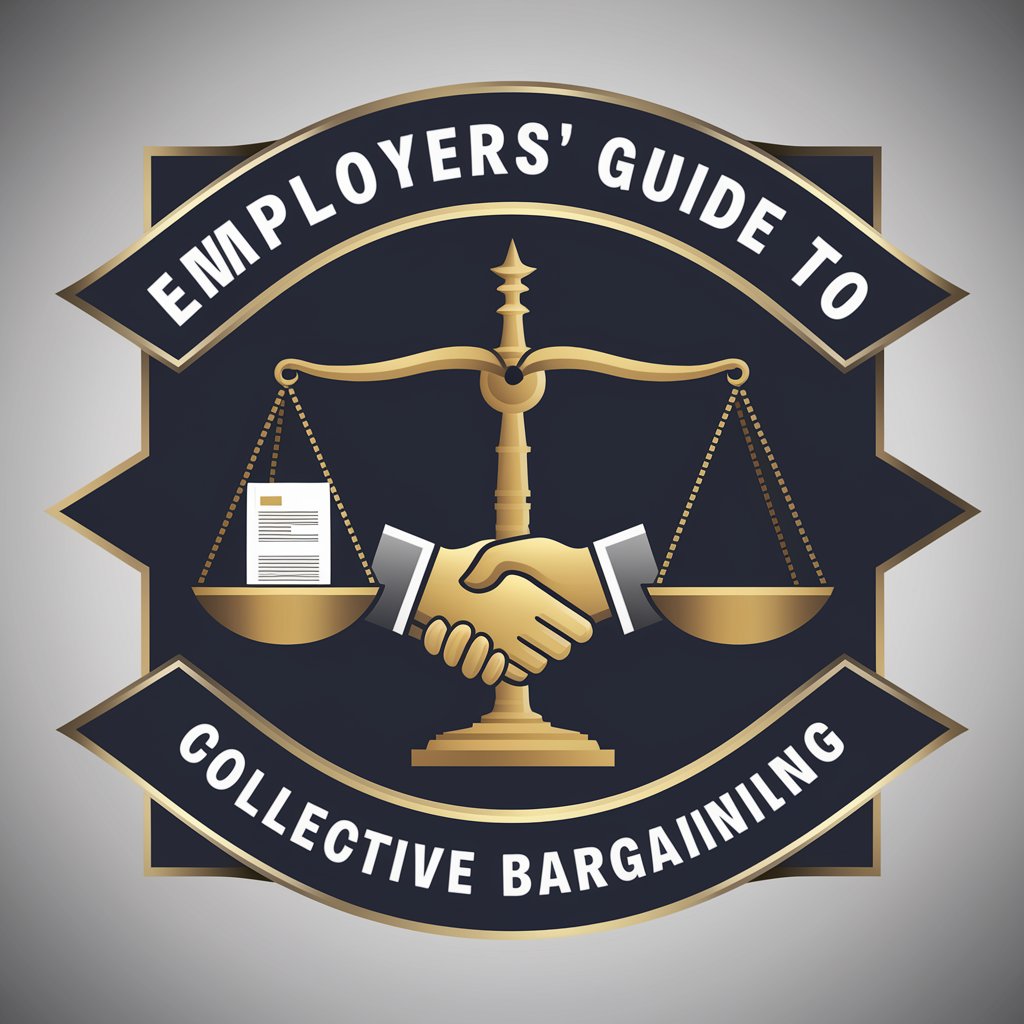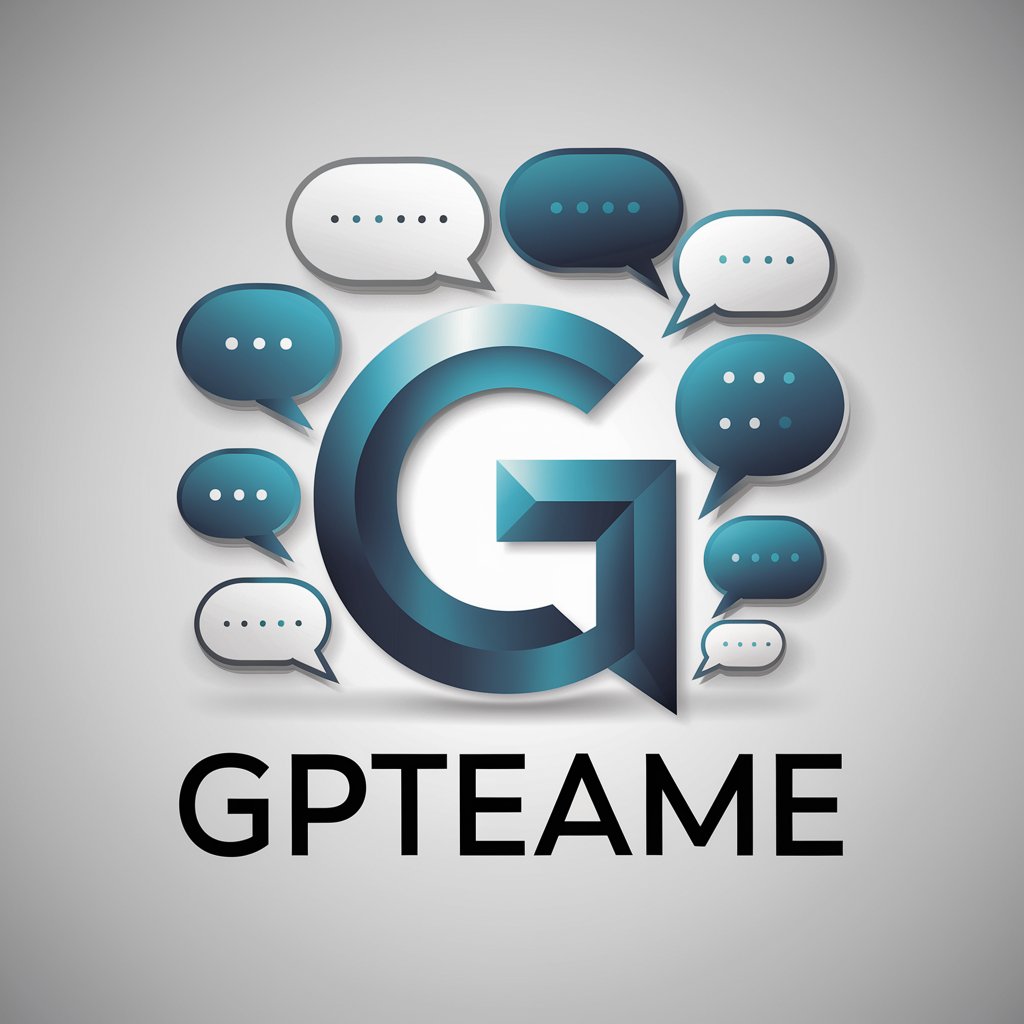Employers' Guide to Collective Bargaining - Collective Bargaining Guide

Welcome to your expert guide on collective bargaining strategies for employers.
Strategic insights for effective labor negotiations
How can employers effectively prepare for collective bargaining negotiations?
What strategies can be used to achieve favorable outcomes in labor negotiations?
What are the key components of a successful collective bargaining agreement?
How does the National Labor Relations Act impact employer strategies during negotiations?
Get Embed Code
Introduction to Employers' Guide to Collective Bargaining
The Employers' Guide to Collective Bargaining is a comprehensive resource designed to assist employers in navigating the complex landscape of collective bargaining. It emphasizes strategic planning and tactical approaches to negotiations, advocating for a balanced perspective that seeks progressive improvements through negotiation rather than expecting outright victories. The guide stresses the importance of setting high aspiration points while being realistic about achieving an ideal state through incremental gains, described as 'hill climbing'. Examples include the nuanced use of different negotiation styles—ranging from integrative problem-solving to competitive bargaining—tailored to specific issues and stages within the bargaining process, underscoring the adaptability required in negotiations. Powered by ChatGPT-4o。

Main Functions of the Employers' Guide to Collective Bargaining
Strategic Planning and Objective Setting
Example
Guiding employers on setting realistic negotiation objectives and employing strategies to achieve them incrementally.
Scenario
Employers are instructed on how to identify their bargaining objectives and align their negotiation tactics to achieve these goals, whether through one or multiple bargaining cycles.
Negotiation Styles and Tactics
Example
Advising on the use of various negotiation styles and tactics depending on the context and stage of negotiations.
Scenario
Employers learn to adapt their negotiation approach, shifting between competitive and cooperative strategies based on the issue at hand, the overall negotiation climate, and the bargaining power dynamics.
Navigating Statutory Obligations and Good Faith Bargaining
Example
Explaining the legal framework governing collective bargaining, including obligations under the National Labor Relations Act.
Scenario
The guide details the statutory requirements for collective bargaining, emphasizing the importance of negotiating in good faith and the potential implications of failing to meet these obligations.
Tactical Response to Union Strategies
Example
Providing strategies to effectively respond to union tactics, including strikes, work stoppages, and public campaigns.
Scenario
Employers are advised on how to maintain operations and negotiate effectively in the face of union pressure tactics, ensuring preparedness for various forms of union action.
Ideal Users of Employers' Guide to Collective Bargaining Services
Human Resources Professionals
HR professionals benefit from the guide's insights on legal obligations, negotiation strategies, and effective communication with union representatives, enhancing their ability to manage labor relations.
Company Executives and Management
Executives and management teams gain a strategic overview of collective bargaining processes, enabling them to make informed decisions that align with company objectives and maintain a positive labor relationship.
Labor Relations Specialists
Specialists in labor relations use the guide to stay informed on best practices, legal nuances, and tactical approaches to bargaining, ensuring they are well-equipped to advise on and lead negotiation efforts.

Guidelines for Using Employers' Guide to Collective Bargaining
Initial Access
Begin by accessing a platform offering insights into collective bargaining without the need for subscription or ChatGPT Plus, such as visiting yeschat.ai for a complimentary trial.
Understanding the Fundamentals
Familiarize yourself with the basics of collective bargaining, including definitions, legal frameworks, and the roles of each party involved in the process.
Strategic Planning
Utilize the guide to develop a comprehensive bargaining strategy, taking into consideration your organization's objectives, the union's potential responses, and the legal landscape.
Tactical Application
Apply specific tactics and negotiation styles recommended by the guide, tailored to the unique circumstances of your negotiation, including both competitive and cooperative approaches.
Continuous Learning
Engage in ongoing learning and adaptation, using the guide to reflect on past bargaining experiences and to stay informed about changes in labor law and negotiation strategies.
Try other advanced and practical GPTs
Course Finder
Unlock Learning with AI-Powered Course Finder

Simon Maps
Strategize with AI-Powered Mapping

gpteame
Bringing News to Life with AI

SOTA Scholar
Unlocking Research Potential with AI

Keyword Explore
Revolutionize SEO with AI-Powered Keyword Insights

PsyItemGenerator
Crafting Precision in Psychometrics with AI

Dan Steel's TA Master - Dansteeltrading.com
Empower Your Trading with AI

ÉirefierGPT
Crafting Irish Dreams with AI

Gift Ideas
Discover the Art of Thoughtful Gifting, Powered by AI

Dream Weaver
Unlock your dreams, inspire your creativity.

Munger Mentor
Empowering Decisions with Munger's Wisdom

一目比較
Simplify Complex Decisions with AI-Powered Comparison

FAQs on Employers' Guide to Collective Bargaining
What is the Employers' Guide to Collective Bargaining?
It is a comprehensive resource designed to assist employers in navigating the complexities of collective bargaining, offering strategies, tactics, and insights to achieve favorable negotiation outcomes.
How can the guide help during negotiations?
The guide provides employers with a framework for preparing and executing negotiation strategies, including how to set objectives, engage in good faith bargaining, and use tactical approaches effectively.
What are some key negotiation tactics recommended?
Key tactics include understanding both distributive and integrative bargaining, effective use of information, managing negotiation dynamics, and strategic concession making.
Can the guide assist with legal compliance?
Yes, it includes an overview of legal obligations under the National Labor Relations Act and other relevant laws, helping employers maintain compliance throughout the bargaining process.
How does the guide address impasse and conflict resolution?
It offers insights on recognizing and managing impasses, strategies for conflict resolution, and guidance on when and how to utilize third-party mediation or arbitration.
